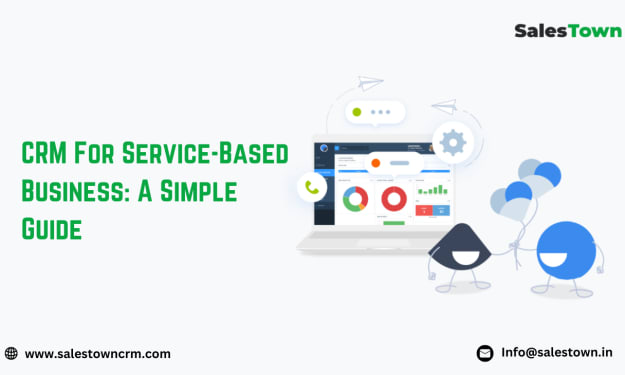How to Implement a Real Estate CRM
Implementing and optimizing a real estate CRM is a multifaceted endeavor that requires careful planning, execution, and ongoing refinement.

Implementing a Customer Relationship Management (CRM) system in the real estate sector is a strategic move that can enhance client management, streamline operations, and boost sales. A well-implemented CRM system can help real estate businesses track leads, manage client interactions, and ultimately close more deals. However, the journey from selecting the right Sales CRM to fully integrating it into your workflow can be complex and daunting without a clear roadmap. In this comprehensive guide, we'll walk you through a detailed, step-by-step framework for implementing and optimizing a real estate CRM, empowering you to harness the full potential of this powerful tool to drive your business forward.
What is real estate CRM?
A real estate Customer Relationship Management (CRM) system is a specialized tool designed to help real estate professionals manage their interactions with clients, streamline their processes, and improve their overall efficiency. It acts as a centralized database where agents and brokers can store and organize important information about their leads, clients, and properties. With a real estate CRM, users can track client communication, schedule appointments, automate follow-ups, and manage marketing campaigns.
The system often includes features like property management, transaction tracking, and integration with Multiple Listing Services (MLS). By using a real estate CRM, professionals can ensure they stay on top of their client relationships, provide better service, and ultimately close more deals. This technology is essential for managing the complexities of the real estate business, helping agents and brokers save time, stay organized, and enhance their productivity.
Benefits of using a real estate CRM
Using a Real Estate CRM is crucial for managing client relationships, streamlining operations, and boosting sales. A CRM system helps real estate professionals keep track of their leads, clients, and properties in one centralized location, making it easier to manage and access information. It automates routine tasks like follow-up emails, appointment reminders, and data entry, saving time and reducing the risk of errors.
By providing insights into client preferences and behavior, a CRM enables more personalized and effective communication, which can lead to higher customer satisfaction and loyalty. Additionally, it offers valuable analytics and reporting tools that help agents and brokers monitor their performance, identify trends, and make informed decisions. Overall, a real estate CRM enhances efficiency, improves client management, and supports business growth, making it an essential tool in today’s competitive real estate market.
Here’s a step-by-step framework for implementing a real estate CRM.
1. Define Your Objectives
Before diving into the world of CRM selection and implementation, it's crucial to establish clear objectives and goals for your real estate business. Take the time to reflect on what you hope to achieve with a CRM. Are you looking to streamline lead management, improve client communication, automate marketing processes, or all of the above? By defining your objectives upfront, you'll be better equipped to evaluate CRM options and ensure that the system you choose aligns with your strategic vision and business goals.
2. Research and Select the Right CRM
With your objectives in mind, it's time to embark on the process of researching and selecting the right CRM for your real estate business. Begin by compiling a list of CRM platforms that cater specifically to the needs of the real estate industry. Look for features such as lead capture, automated marketing campaigns, transaction management, and integration capabilities with other essential tools like MLS listings and email marketing platforms. Consider factors such as pricing, scalability, user interface, and customer support as you evaluate different options. Take advantage of free trials and demos to get a hands-on feel for each CRM before making your final decision.
3. Customize and Configure
Once you've selected a CRM, it's time to roll up your sleeves and customize it to fit your unique business requirements. Start by configuring lead capture forms, pipeline stages, and automated workflows to mirror your existing processes seamlessly. Personalize the system with your branding by uploading logos, customizing color schemes, and creating tailored email templates. The more tailored the CRM is to your workflow, the more effectively it will support your operations and drive productivity.
4. Data Migration and Integration
Data migration and integration are critical phases of CRM implementation that require careful planning and execution. Before migrating your existing data into the new system, take the time to clean and organize it thoroughly to ensure accuracy and consistency. Map fields between your old and new systems to facilitate seamless data transfer. Additionally, integrate your CRM with other essential tools and platforms such as email clients, calendars, and marketing automation software to create a unified ecosystem that streamlines your workflow and enhances productivity.
6. Training and Onboarding
Empowering your team with the knowledge and skills they need to leverage the CRM effectively is essential for successful implementation. Provide comprehensive training sessions covering all aspects of the system, from basic navigation to advanced features such as lead scoring and automation. Encourage hands-on practice and offer ongoing support to address any questions or concerns that arise. A well-trained team is key to maximizing the ROI of your CRM investment and driving adoption across your organization.
7. Implementation and Adoption
With the groundwork laid and your team equipped, it's time to roll out your CRM implementation plan. Start by gradually transitioning your existing processes to the new system, ensuring minimal disruption to day-to-day operations. Monitor adoption rates closely and solicit feedback from users to identify any pain points or areas for improvement. Continuously refine your processes based on user input to drive greater adoption and engagement. Consider appointing CRM champions within your organization to advocate for the system and encourage adoption among their peers.
8. Monitor Performance and Iterate
Once your CRM is up and running, it's essential to monitor its performance closely and measure its impact on your business objectives. Track key metrics such as lead conversion rates, client engagement, and sales pipeline velocity to gauge the system's effectiveness. Identify areas for improvement and iterate on your processes accordingly. Regularly review your CRM configuration to ensure it remains aligned with your evolving business needs and make adjustments as necessary to optimize performance and drive continuous improvement.
Best Practices for Using a Real Estate CRM
A real estate Customer Relationship Management (CRM) system can revolutionize how you manage your business, keeping you organized, improving client relationships, and boosting sales. Here are some best practices to ensure you get the most out of your real estate CRM.
1. Keep Your Data Clean and Updated
Regularly update your CRM with accurate information. Clean data is essential for effective communication and follow-ups. Remove duplicates, correct errors, and ensure all client details are current. This keeps your records reliable and helps you make informed decisions.
2. Segment Your Contacts
Segment your contacts into categories such as buyers, sellers, and investors. Further segmentation can be done based on property preferences, buying timelines, and other criteria. This allows you to tailor your communication and marketing efforts, making them more relevant and effective.
3. Automate Routine Tasks
Leverage the automation features of your CRM to save time and reduce manual work. Set up automated email campaigns for new listings, follow-up reminders for leads, and task notifications for your team. Automation ensures no opportunity slips through the cracks and keeps your workflow efficient.
4. Personalize Communication
Use the CRM to personalize your communication with clients. Address clients by their names, refer to their specific needs, and provide personalized property recommendations. This builds stronger relationships and increases the likelihood of closing deals.
5. Track and Analyze Performance
Regularly track key performance metrics such as lead conversion rates, sales cycles, and customer satisfaction. Use the CRM's reporting tools to analyze this data and identify areas for improvement. Understanding your performance helps you adjust strategies and improve overall efficiency.
Conclusion
Implementing and optimizing a real estate CRM is a multifaceted endeavor that requires careful planning, execution, and ongoing refinement. By following the step-by-step framework outlined in this guide, you can navigate the process with confidence and set your real estate business up for success. Remember, a well-implemented CRM is not just a tool—it's a strategic asset that can empower you to streamline operations, nurture client relationships, and drive business growth in today's competitive market.
About the Creator
Akash237
Are You Looking For Best Sales CRM Software Provider in India? Then You Can Contact with salestown.in For The Best Sales CRM Software in India.
Enjoyed the story? Support the Creator.
Subscribe for free to receive all their stories in your feed. You could also pledge your support or give them a one-off tip, letting them know you appreciate their work.






Comments (1)
A superb writing by you.